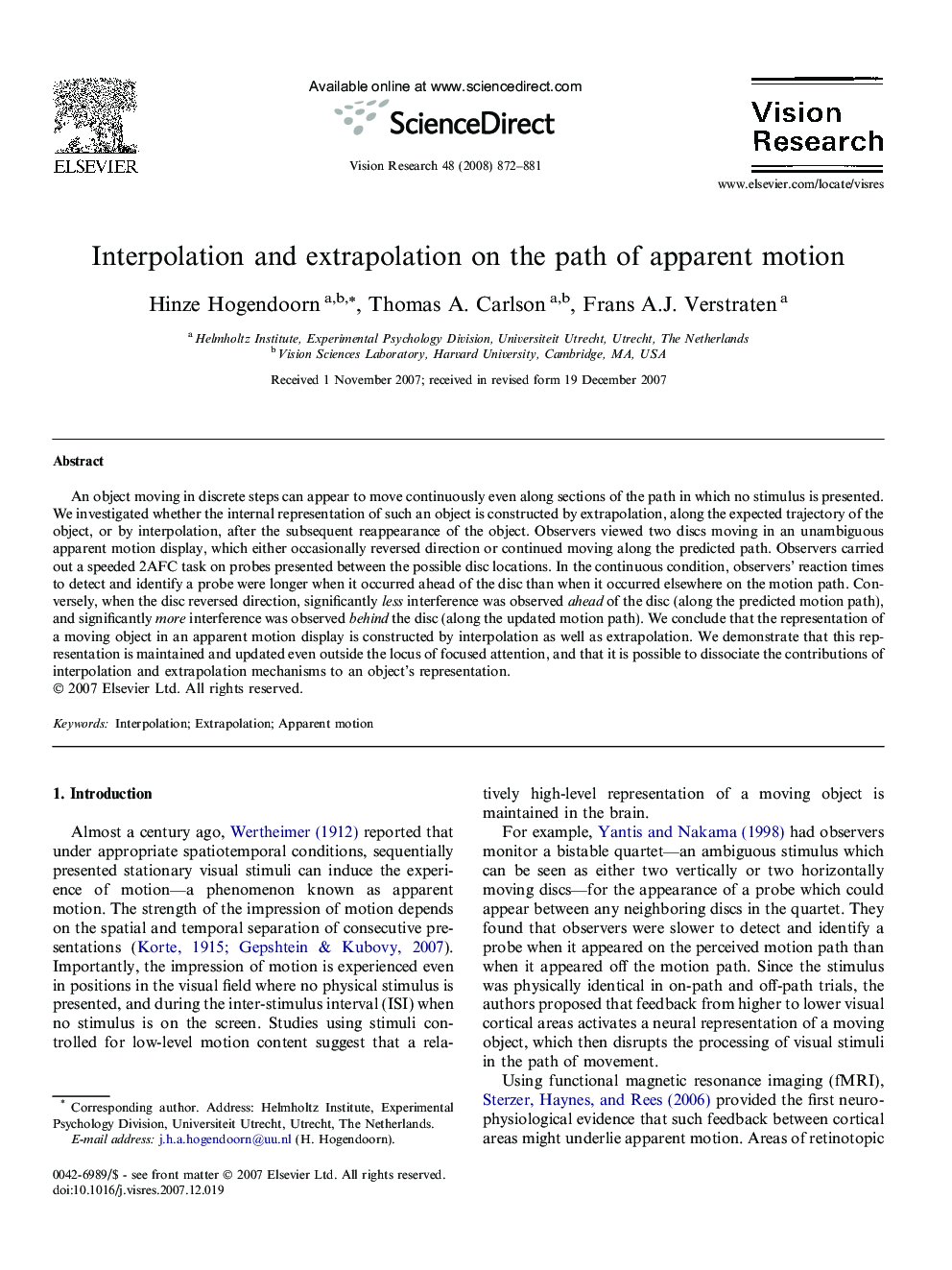| Article ID | Journal | Published Year | Pages | File Type |
|---|---|---|---|---|
| 4035333 | Vision Research | 2008 | 10 Pages |
An object moving in discrete steps can appear to move continuously even along sections of the path in which no stimulus is presented. We investigated whether the internal representation of such an object is constructed by extrapolation, along the expected trajectory of the object, or by interpolation, after the subsequent reappearance of the object. Observers viewed two discs moving in an unambiguous apparent motion display, which either occasionally reversed direction or continued moving along the predicted path. Observers carried out a speeded 2AFC task on probes presented between the possible disc locations. In the continuous condition, observers’ reaction times to detect and identify a probe were longer when it occurred ahead of the disc than when it occurred elsewhere on the motion path. Conversely, when the disc reversed direction, significantly less interference was observed ahead of the disc (along the predicted motion path), and significantly more interference was observed behind the disc (along the updated motion path). We conclude that the representation of a moving object in an apparent motion display is constructed by interpolation as well as extrapolation. We demonstrate that this representation is maintained and updated even outside the locus of focused attention, and that it is possible to dissociate the contributions of interpolation and extrapolation mechanisms to an object’s representation.
